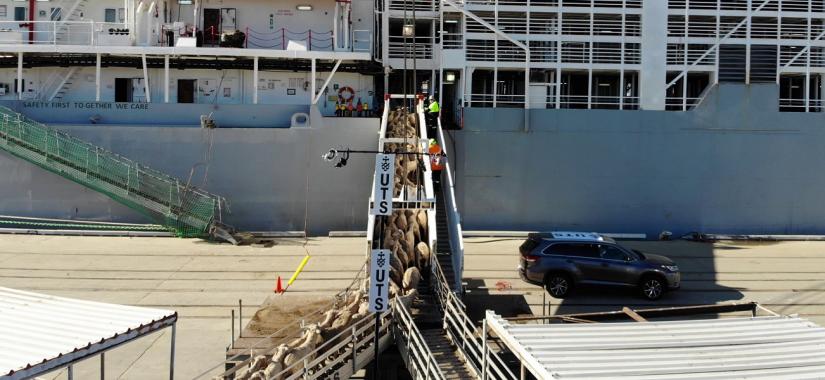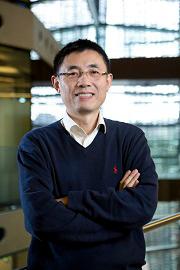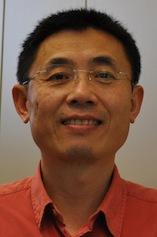For many years, someone has had the job of counting the tens of thousands of sheep heading onto a vessel for live export, which happens over several days (and nights) in various weather conditions.
To make the job harder, the sheep come through non-stop, and not always one at a time. They can crowd together or move backwards in the queue as a result of congestion or in response to noise or the movement of people.
Under these conditions, it’s surprising the trained human sheep counters achieve accuracy higher than 99 per cent. But this great performance still leaves a potential miscalculation of hundreds of sheep on a large vessel, with a commercial value of up to $200,000.
In 2018, the Livestock Export Program (a collaboration between research bodies LiveCorp and Meat & Livestock Australia) approached UTS hoping its expertise could help develop a better, automated system.
Professor Jian Zhang, from the UTS School of Electrical and Data Engineering, and his team of experts in artificial intelligence analytics worked with the industry, using live-feed cameras to produce a successful prototype that may have many practical applications.
“At the beginning of the day, people can count to maybe 99.5 per cent accuracy, but how long can someone keep that up? The morning session may be okay, but not necessarily the afternoon,” Dr Zhang asks.
With our technology we can reach 99.9 per cent accuracy consistently. As long as you have power, the system will never tire.
- Professor Jian Zhang
AI boosts efficiency
Using cameras mounted above the loading races, the program tracks the movement of sheep using AI-based image processing technology.
“We can make sure the sheep are always counted when moving forward and not if they come back," Professor Zhang says.
Nick Baker, Research, Development and Extension Manager for the Livestock Export Program, says the live export industry has been keen to develop technology like this for some time.
“We’re always trying to create efficiencies for industry – so the question was what can we do to make this a more accurate and better process?" he says.
"You could have 40,000–65,000 sheep being loaded onto a vessel in the space of 48 hours, going day and night, with up to four trucks unloading at a time, so it’s quite an intensive requirement for the people who do count the sheep.”
He says ideally the prototype will lead to a portable, wireless handheld device that can automatically count livestock in different locations, or even be used to check on the welfare of animals.
“There is a good appetite for automation in the industry, so we could definitely look to build on this.”
Nick says the relationship with UTS throughout the project was helpful and symbiotic.
“They've been able to keep us informed and enabled the technology side of it, giving us an insight into the possibilities.”
Exploring other opportunities
Professor Zhang and his team have already been working elsewhere in the livestock industry with trials of the technology at various saleyards.
“If you want to commercialise something you have to have a big business case that involves more users,” he says.
Further trails will be carried out in livestock export ports and saleyards using portable devices such as mobile phones to build a product prototype.
The portable system can be easily used by employees from livestock export companies and saleyards to support their business.
“We’ve found at the saleyards we’ve been very welcome,” Professor Zhang says.
“They don’t want to have any conflict between the farmer and the saleyards about how many sheep have been delivered.”
Professor Zhang says although some people think humans should keep doing the counting, AI technology is definitely appealing to the next generation of farmers.
“They say, ‘If the camera can do it better, why not?’”
Research team
-
Faculty of Engineering and IT
-
Faculty of Engineering and IT
-
Nick BakerRD&E Manager, LiveCorp




